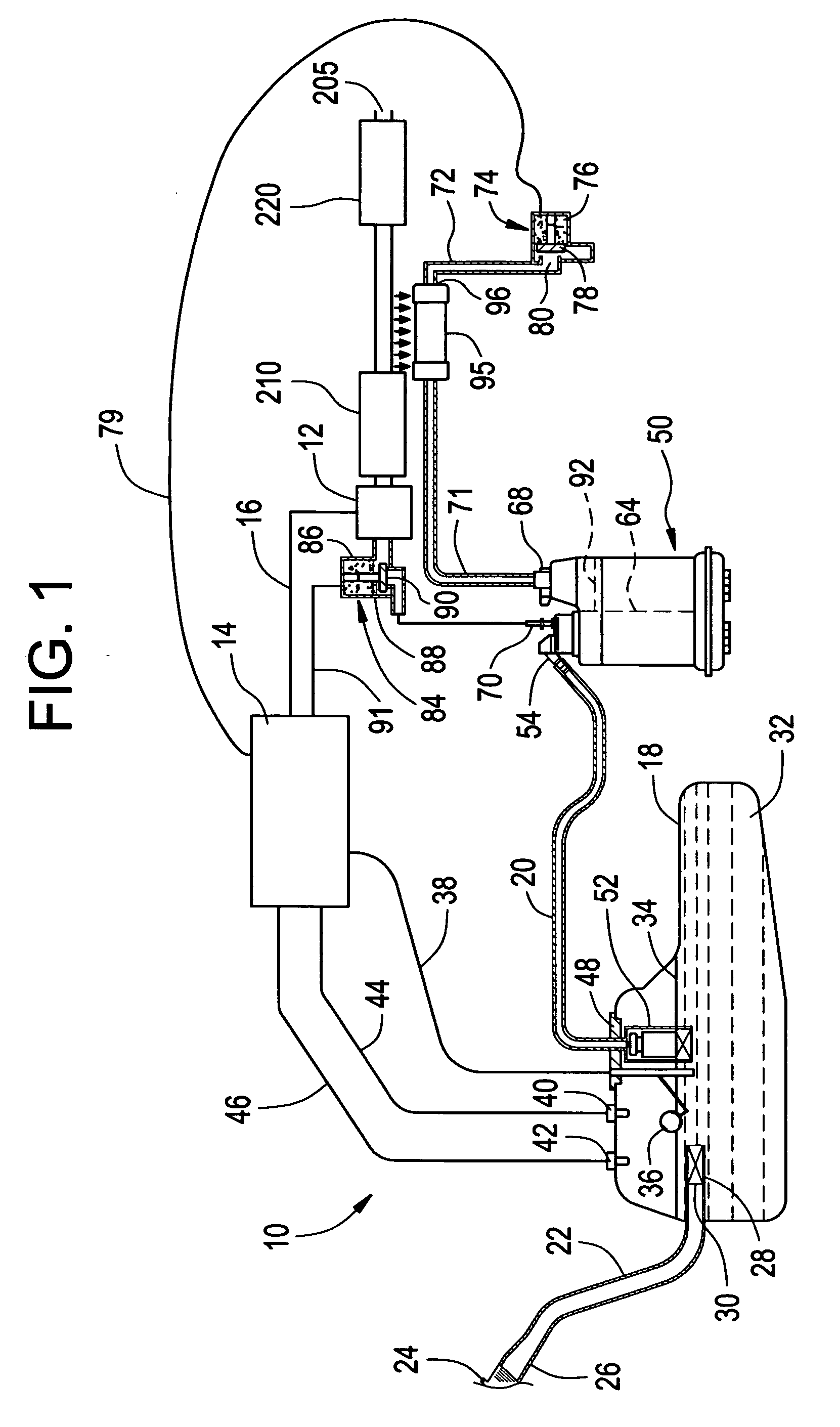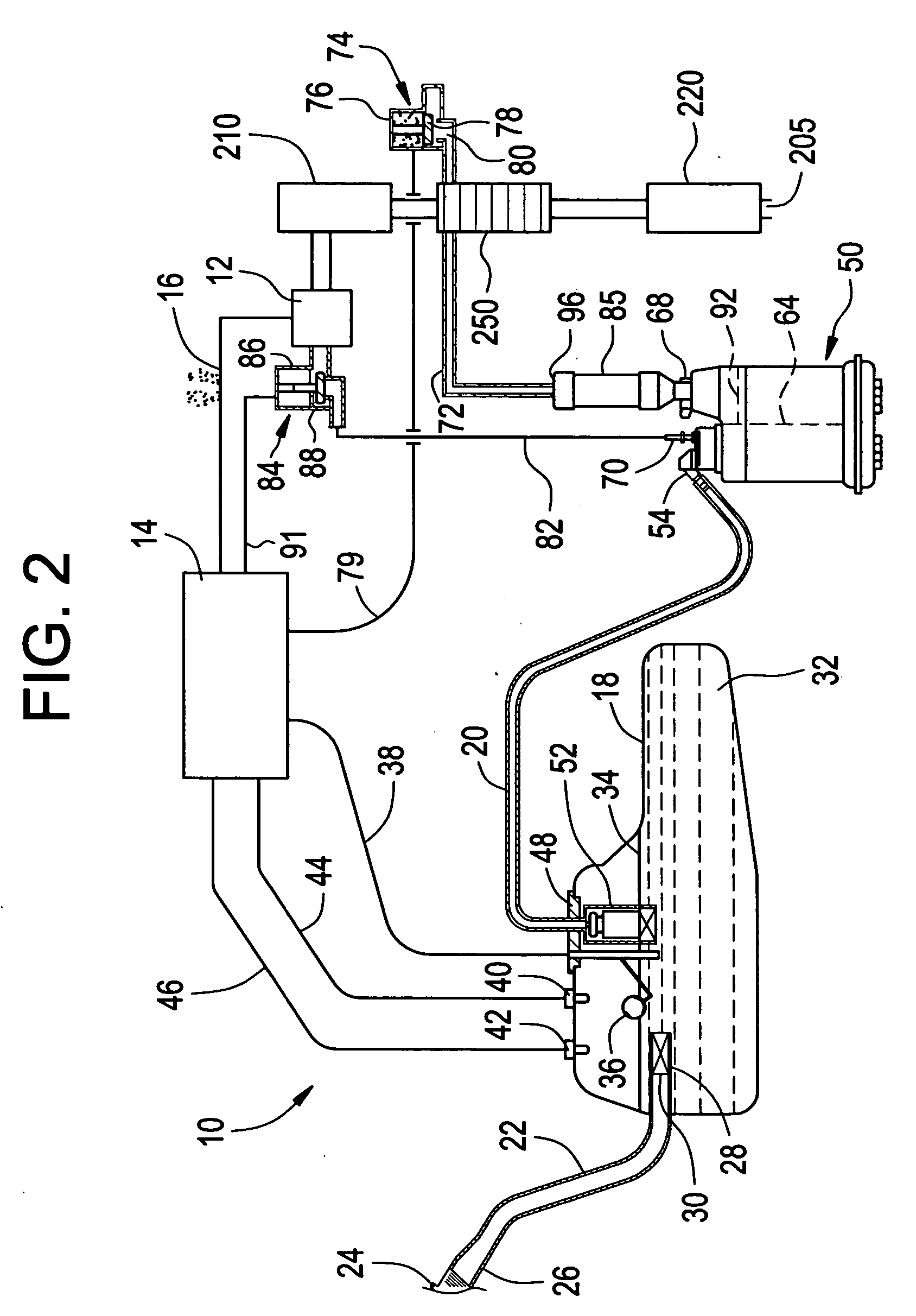Method and system of purging evaporative emission control canister using heated purge air
a technology of evaporative emission control and purge air, which is applied in the direction of combustion air/fuel air treatment, machines/engines, mechanical equipment, etc., can solve the problems of bleed emissions, vapor breakthrough, hydrocarbon emissions, and particularly acute bleed emissions of canisters
- Summary
- Abstract
- Description
- Claims
- Application Information
AI Technical Summary
Benefits of technology
Problems solved by technology
Method used
Image
Examples
example 1
[0051] In a test, a 2-L canister and a 200 cc scrubber at 25° C. were purged with exhaust heated purge air. The canister included a mass of carbon 2000(0.3)=600 g, with a mass of heel of 100 g, and mass of adsorbed vapor (butane) of 50 g. The heat capacity of carbon is 0.3 cal / g° C. and the heat of desorption of butane is 92 cal / g.
[0052] A volume of 10 cubic feet of purge air (300 g) was heated to 100° C. using exhaust heat. The heat capacity of air is 0.24 cal / g° C. From heat balance calculation, the canister temperature increased from 25 to 28° C. when purged with the 10 cubic feet of 100° C. purge air. If the canister was empty (meaning no butane loading) the temperature increase would have been from 25 to 44° C.
[0053] Although not wishing to be bound by theory, the volume of the canister hinders the heat transfer temperature to which the canister will rise in the presence of exhaust heated purge air, and keeps the temperature of the canister's contents below a temperature suff...
example 2
[0056] Experiments were conducted to demonstrate the effectiveness of using exhaust heated purging of a low purge hybrid vehicle zero evap scrubber. A system to simulate the use of exhaust heated air is depicted in FIG. 5. As shown, air enters the system in the direction of arrow at intake 301. The air travels through heat exchanger 302. The heat exchanger comprises electrical heating tape wrapped around a glass tube. The air passing through the heat exchanger 302 travels through conduit 303 to a 200 cc carbon monolith scrubber 305. The scrubber 305 in turn includes a conduit 306 which communicates air into the entry 307 of a 2.1 L Near-zero evap three chamber canister 310. The canister in turn includes a purge vapor outlet 311 which is in communication with a vacuum pump 320 for applying negative pressure to the system to provide for the air flow rate.
[0057] Prior to the heated purge test, the canister 310 was loaded with a 50:50 butane / nitrogen mixture until it reached a 2 g brea...
PUM
 Login to View More
Login to View More Abstract
Description
Claims
Application Information
 Login to View More
Login to View More - R&D
- Intellectual Property
- Life Sciences
- Materials
- Tech Scout
- Unparalleled Data Quality
- Higher Quality Content
- 60% Fewer Hallucinations
Browse by: Latest US Patents, China's latest patents, Technical Efficacy Thesaurus, Application Domain, Technology Topic, Popular Technical Reports.
© 2025 PatSnap. All rights reserved.Legal|Privacy policy|Modern Slavery Act Transparency Statement|Sitemap|About US| Contact US: help@patsnap.com



